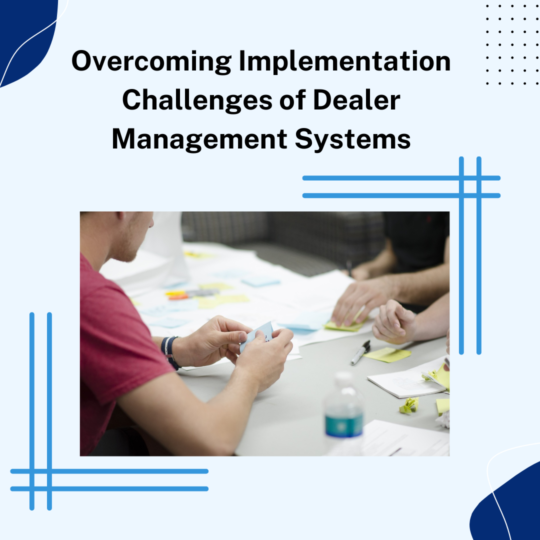Dealer management system (DMS) technology is becoming increasingly essential, but how proficient are internal teams in its implementation?
The statistics on successful DMS tech implementations are not promising.
Despite the abundance of advice following numerous failed attempts, most articles on implementation best practices assume a significant level of control and leadership buy-in. However, reality rarely aligns with such optimistic expectations.
Rather than presenting a set of idealized guidelines, here is a compilation of obstacles commonly encountered in unsuccessful DMS tech implementations. As you progress in your DMS journey, be aware of these red flags, and we’ll discuss effective strategies to navigate past them.
Obstacle 1: Overlooking Key Players
DMS technologies involve various stakeholders, and during the development of new processes and dms system selection, crucial players are often overlooked. This oversight is not entirely your fault, as the scope of dealership management is broader than initially perceived.
The Solution: Create a stakeholder map at the project’s outset, identifying individuals and teams involved in dealership management. This visual representation will allow for ongoing expansion.
Obstacle 2: Poor Dealership Data
The effectiveness of any DMS tech relies heavily on the quality of the data it contains. At the outset, dealing with messy data is inevitable, requiring you to understand what you know, what you don’t know, and how the DMS tech will enhance your knowledge.
The Solution: Embrace the initial messiness of data and focus on defining knowledge-creating processes, use cases, and features. Ideal data structures can be established later.
Obstacle 3: Resistance to Change
“Because that’s the way we’ve always done it” is a common response when questioning current dealership processes. However, implementing DMS tech often necessitates a shift in the operating model, impacting processes, personnel, contract artifacts, and data models.
The Solution: Cultivate a mindset of “continuous improvement” and consciously strive to break away from past practices for sustained progress.
Obstacle 4: Expecting Instant Transformation
Implementing tech is driven by the hope for DMS ROI, but transformative outcomes take time. It’s crucial to manage expectations and communicate the evolutionary nature of the process to stakeholders.
The Solution: Foster a culture of iteration, experimentation, and transparent communication. Provide stakeholders with visual progress updates through tools like Kanban boards and engage in ongoing experimentation.
Obstacle 5: Lack of Consultant Management
Many successful larger DMS implementations benefit from external assistance. However, managing consultants is a distinct discipline, and inexperienced teams may struggle with coordination and information transparency.
The Solution: Trust but verify – establish clear connections between objectives and deliverables using statements of work and project plans. Leverage the expertise of Sales departments in managing external support.
Obstacle 6: Inadequate Inventory Management
The quality of inventory data is a substantive concern. Reactive compilation of stock quantities may result in increased carrying costs (overordering) or lost sales (underordering.)
The Solution: Make inventory management, optimization, and harmonization integral to your DMS tech journey. Addressing contract issues post-implementation can impede progress.
Obstacle 7: Viewing DMS Tech Solely as a Sales Solution
While DMS software promises significant improvements, achieving these benefits often involves addressing people-related challenges rather than just technological solutions.
The Solution: Recognize that DMS tech is not solely a Sales department matter but a company-wide issue. If your business also provides rentals or services, work with internal counterparts to find solutions that unify data and remove siloes.
Implementing DMS technology for enhanced dealer management is a multifaceted process, fraught with potential stumbling blocks. By effectively managing expectations, planning for adaptability, and overcoming these obstacles, your implementation program stands a greater chance of success.

